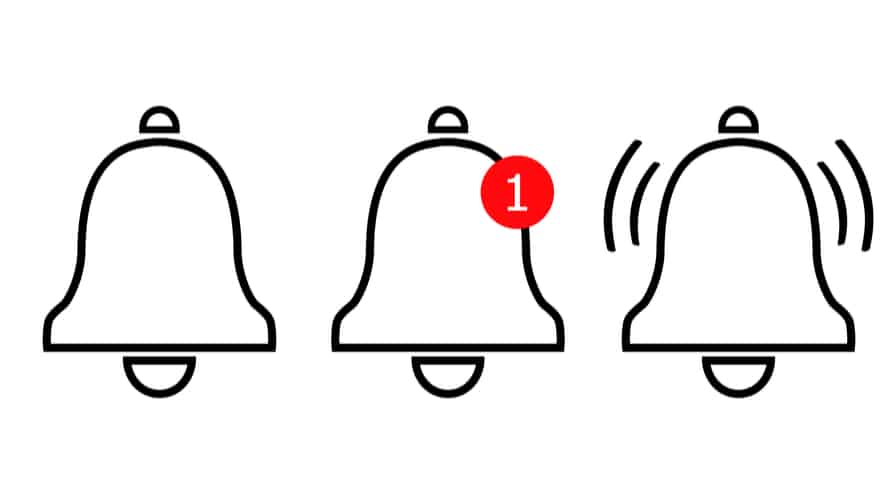Publishers and brands have one true mission: connecting with their audiences in a significant and lasting way. Engaged audiences become returning readers, the cost of their readership (if done correctly) is significantly lower than acquiring new readers, and their data-rich profiles are a more valuable prospect for advertisers.
Today, publishers are most likely to find those audiences on mobile devices. However, with access to a boundless array of apps and only a handful they use regularly, mobile users can be hard to reach. In recent years, publishers have forged a direct channel that drives readers back to a native or progressive web app – push notifications.
Finding a delicate balance
Here is the catch. Too many notifications frustrate subscribers, burning out their engagement and pushing them to unsubscribing and losing faith in the brand. Audiences disappear, and readership is lost. So, publishers should opt for conservative strategies, sending fewer messages to keep their readers, right?
Well, no. There is a phenomenon in push notifications that reader engagement will naturally ebb away, regardless of the strategy used. The longer they are subscribed, audiences always drift toward unsubscribing or becoming inactive.
On average, the click-through rate (CTR) decreases by a factor 0.4 from week one to week five. If the CTR is 1% in week one, by week five it will be at 0.4%. This is a constant average across every publisher, measured in Marfeel’s latest study into the value of push notifications.
This means publishers need to find the delicate balance between burning their readers by overloading them and leaving value on the table by ensuring not to drive clicks back to their content before the reader becomes less engaged.
A fresh look at metrics
A recent study designed to measure the value of automated messages and identify effective push strategies resulted in the development of a new metric: subscriber lifetime value (SLTV).
This metric measures the overall increase in readership created by push notifications, for every subscriber. By combining the natural reduction in engagement with core metrics, publishers can see the net value added to their readership. This allows for a clear, objective approach to push notifications, understanding the value created by an entire strategy, for the first time.
Conducted by Marfeel, the study examined more than five million push notifications and the push strategies adopted by 123 publishers that use the company’s automated push notification feature.
According to the study, the KPIs most commonly used to measure push notification strategies are:
· Click-through rate (CTR), the percentage of users who click on a notification
· Clicks per user (CPU), the average rate of clicks per 100 users
· Unsubscribe rate (USR), the percentage of users who opt out of receiving notifications
· Acceptance Rate, the percentage of users who accept invitations to receive notifications
These traditional metrics measure the relative success of specific messages – but offer no method for comparing the results of various strategies. To understand the performance of multiple strategies – and the total value of an overall push notification strategy – the researchers developed an original metric that factors in the expected decline in engagement levels when evaluating a user’s interaction with all push notifications across all strategies.
This newly-created subscriber lifetime value metric is the average total traffic generated by push notifications to a user based on specific strategies. For example, tactics might include recommending articles based on those previously read, the creative images and messages used in notifications, and the choice of how many notifications to send per user, and when to deliver them.
Maximising SLTV, optimising performance
By analysing extensive publisher data, the study isolated the factors that maximise SLTV, then measured the overall value created from various strategies. The results reveal conclusively that SLTV is the essential metric for comparing the impact of multiple push strategies.
Highlights of the study, detailed in a white paper, include the finding that optimising the number of messages sent per user, combined with increasing intensity for the most engaged users, increased SLTV by 40% when compared to sending a single message per day. Identifying the best time of day for sending selected messages resulted in the second highest increase in SLTV, while personalising articles increased SLTV by approximately 20%, and notifications featuring images increased SLTV by approximately 10%.
The final conclusion drawn from the study was that the least engaged readers are most likely to click on notifications containing links to the most popular article of the day. The more engaged readers, on the other hand, are more inclined to read relatively more obscure articles.
Communicate with care
Any push notification strategy has the potential to increase revenue in the short term, but careless overuse of push can damage brands by eroding the user’s trust. Without a solid strategy, it’s dangerously easy to alienate your audience with accidental spam. However, with the right strategy, it is possible to generate push notifications that don’t lose their luster over time.
Fortunately, publishers are now well-equipped to deliver real value with authentically engaging push notifications. “Great push is all about inspiring delight – facilitating a relevant and valuable app experience for your users and securing a prized place in their daily routines,” VC blogger Andrew Chen writes. “Focus on understanding what your users value about your service and tailor your messages to their unique needs and interests. You’ll see push engagement skyrocket, and your users transform into rabid advocates.”

